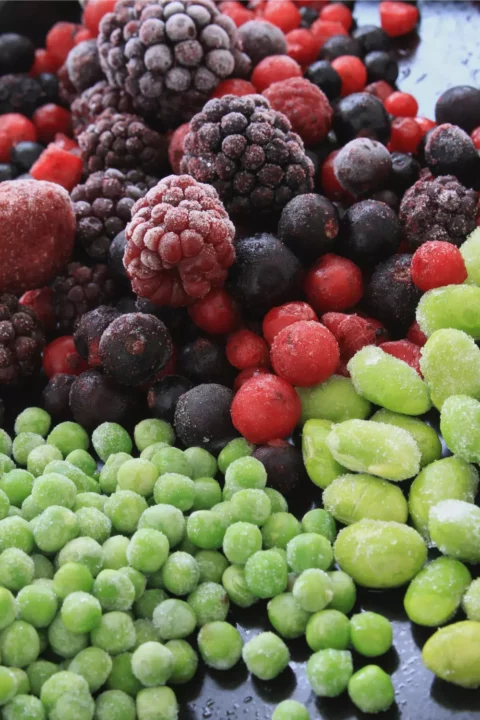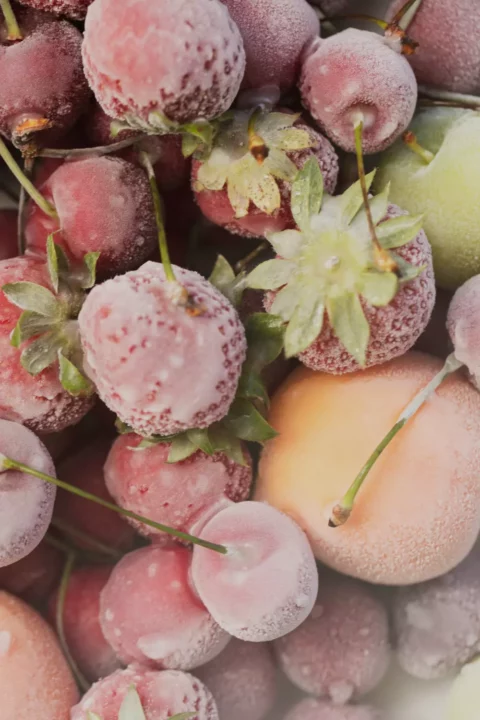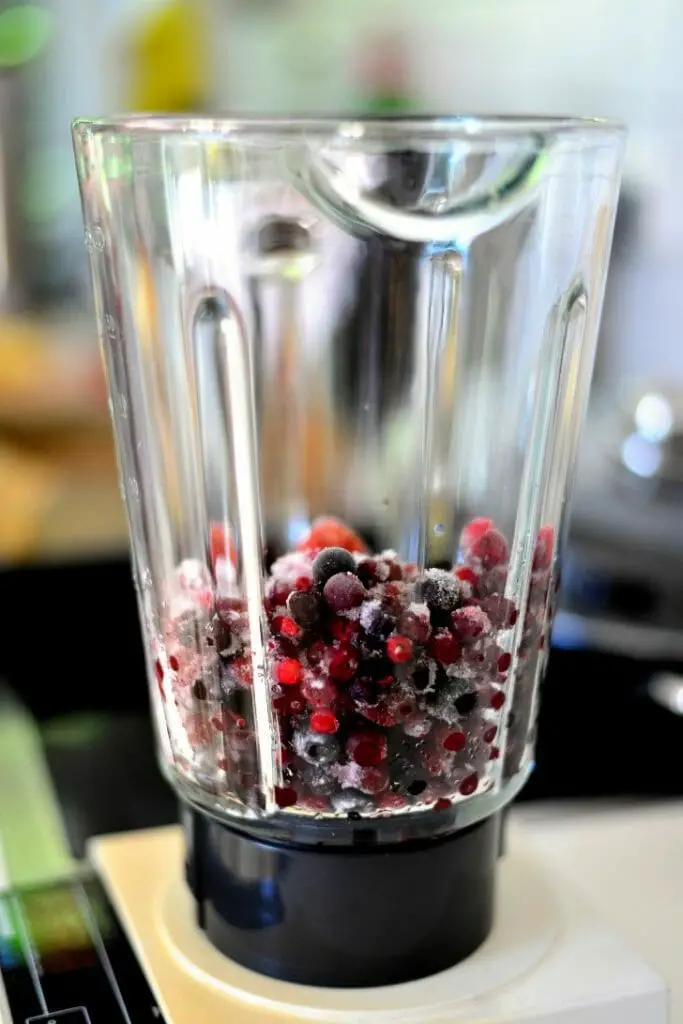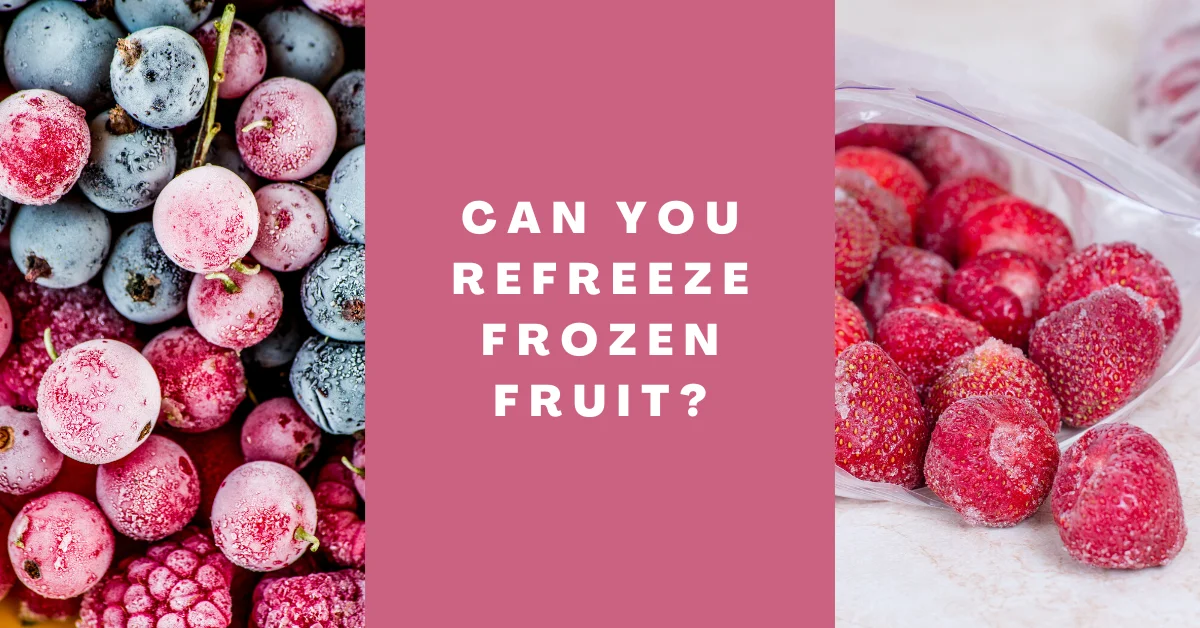My mother always told me to never refreeze food items. I never understood the logic behind it until I did my experiment. I took some frozen berries out of the freezer to make a nice jug of smoothie and forgot to put the berries back into the fridge. By the time I remembered, the berries had completely defrosted. This made me a bit skeptical about popping them back in the freezer, so I did some research of my own. So, can you really refreeze frozen fruit?
Here I am, with tons of research and a guide, to help you with alternative measures you can take when attempting to do so. It is important to remember that the goal is to be able to utilize the maximum nutrients present in the fruit.
The real question is can you refreeze frozen fruit or is it just a myth that our ancestors came up with? Despite it being a myth, I believe that certain safety precautions need to be taken to be able to successfully refreeze frozen fruit. Quality control is key when refreezing certain items.
Before we dive deep into the conversation, let’s have a look at some common questions asked about refreezing fruits.
Can you refreeze frozen fruits?
Yes, you can refreeze frozen fruit to avoid molds and bacteria. It’s safe to refreeze frozen fruits kept under 40°F within 2 days of thawing. However, rather than refreezing, it’s a good idea to let the fruits thaw in the fridge.

Is refrozen and thawed fruit safe for consumption?
It is the partial thawing and refreezing that results in loss of food quality, however, the food is still safe for consumption. Such foods are safe to use after they have been frozen. This is because they consist of crystalized ice at around 40°F.
How long can frozen berries be stored once thawed?
Defrosted frozen berries must be consumed within a span of 2 days. If you have time, then let them defrost in the fridge. This way the flavor and texture of the berries are maintained.
How to refreeze frozen fruit
If you need to refreeze thawed fruit then there are two ways you can do this. The first is to cook it before you refreeze and the second is to refreeze it as quickly as possible before it gets contaminated. Cooking the fruit means the temperature is increased which kills any bacteria that may have gotten on it.
Freezing the fruit after you have cooked it is safe, just make sure to let it cool down to room temperature before you put it in the freezer. If you want to store fruit in its original shape, then I would advise you to refreeze it only if you have thawed it in the fridge. Make sure that it is not left in an environment that is warmer than 40°F. Moreover, don’t refreeze after 3 days maximum and a minimum of 2 days.
Apart from thawing in the fridge, it is essential that for best results you store fruit in an airtight container or freezer bags with double seals.
Here is another interesting article that you can use to freeze queso at home!
Common issues with refreezing frozen fruit
Refreezing frozen foods has two major concerns, i.e. safety and quality. You could always put food in the freezer and let it freeze but remember this puts your health at risk. Fruits are 80% water, and when the water inside the fruit freezes, it turns to ice.
The ice crystals tend to destroy the cell walls or the shell of the fruit, and as a result, the fruit turns to mush when defrosted. The strength of the cell wall loses its firmness, leaving the frozen fruit to taste and smell funny as well. If you ever cleaned out old fruit, you’d know what I’m talking about.
To further add to the problem, the crystals melt to create lots of moisture resulting in soggy fruit. Refreezing thawed fruit means allowing more space for ice crystals to give worse-quality results.

Safety concerns about refreezing fruit and other foods
The process of refreezing is not inherently dangerous. The danger comes from the risk of contamination and degradation that happens after the food is thawed. The common misconception is that freezing kills bacteria or mold however that is not the case. Freezing only prevents bacteria from forming. So, if the fruit gets contaminated during the thawing process, it will continue to multiply despite storing it in the freezer.
Molds feed on carbohydrates, more specifically simple sugars, which are the basic components of fruits. Molds do not affect your health but the taste is not a desirable one and can impact you in other ways.
Quality concerns about refreezing fruit and other foods
Now that you know the technical reason behind the concerns of refreezing fruit, it is easier to imagine what happens after the fruit is thawed. The frozen fruit loses its firmness and texture. Quite often the fruits come out of the freezer in a mushy form which makes them easier to utilize in smoothies and shakes. Even for baking, the mushy fruit serves as ideal.
Refreezing the fruit further compromises the strength and elasticity which is perfect for cooking. Although it does mean that the fruit is bonded together after you refreeze it. If you look at it from a nutrition values point of view, refreezing is not ideal. This is because the fruit loses its flavor and nutritional value every time you refreeze it after it has thawed completely.

Refreezing fruit juice
Freezing fruit juice is different from freezing whole fruit or pieces of fruit. The concentrates of juice may be difficult to dissolve with water thus making it safer for consumption after they have been thawed in the fridge at temperatures below 40°F.
Fermentation in fruit juices happens quickly due to the high sugar concentration. Hence you should refreeze juice as soon as possible to keep it as fresh as possible. Be careful and don’t leave the juice hanging on your counter during the warm summer afternoons.
Be conscious of any odd textures, tastes, colors, or foul smells. If you feel any of these then toss the juice out and start fresh.
Also, read our article on refrigerating cooked rice noodles at home!
How to freeze fruit so you don’t have to refreeze it?
Here are a couple of ways you can freeze fruit to avoid refreezing it!
1. Freeze in portions
To avoid overly mushy fruit or using up all the fruit at once, your best option is to freeze some of it. If you have a large batch of berries or other fruits, then it’s better that you freeze it in smaller packets so that you only thaw as much as you need for single use.
2. Individual freezing
Another way to practice freezing fruit is how frozen fruit is sold in supermarkets. The key is to freeze fruits individually first and then make packets out of them. This makes it easier to scoop out just as many pieces as you need rather than having to defrost an entire slab of berries.
Additionally, freezing pieces separately will make the process quicker. The quicker it freezes the faster the crystals form inside, as a result allowing the shape of the fruit to stay intact when thawed. The whole process is quite easy; it just takes an extra bit of commitment.
3. Freeze fresh fruit
Another tip is to freeze fruit when it is in its freshest state possible. Freezing your produce means you will get the best form of frozen fruit. Pick the fruit, cut it into smaller pieces, and freeze it. It’s that simple.
If you can’t grow your own fruit, then look for the best local farmer’s market or even the nearest grocery store. The problem with imported fruit is that they pick fruit in its raw form and then ship and store it for a few days. By the time this fruit reaches you, it has lost its freshness as well as its nutritional value.
4. Use ascorbic-citric acid
The use of ascorbic acid is something you will find in the tin can section of the supermarket. Some people suggest making use of the acid to make the fruit retain its shape after you have cut it. The ascorbic citrus prevents the fruit from ripening further and protects it from the process of oxidation. It also prevents nutrients from draining away.
Here’s how you can refreeze frozen fruits!
To sum it up…
Refreezing fruit may not be ideal but sometimes it is necessary, therefore I would advise doing it only if you follow the correct steps. Freezing it up in batches is my favorite technique when freezing berries for smoothies. But make sure if something looks doubtful or smells foul then proceed to toss it out rather than putting your health at risk.
I’ve read about the use of ascorbic acid but adding a chemical gives the fruit an artificial touch. You should only use it if you have complete knowledge about its use. However, I most certainly believe in the fresh and organic use of fruits in your smoothies for intended results. I hope this detailed article answers your question of whether you can refreeze frozen fruit.
Make sure to check out this article on how to freeze fried chicken!



